Altec horn speaker
27/11/06 13:28 Filed in: Speakers
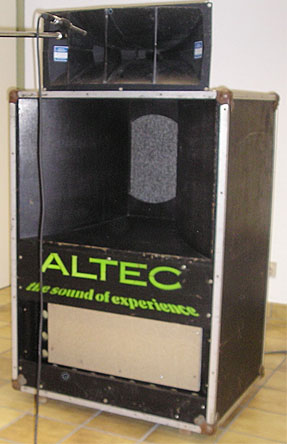
Last week I had a very special experience. Multi-site speaker development!
Unfortunately I was recovering from a cold, and as Buno lives 1.5 hours driving from my place I couldn't join the team. Therefore we've decided to send measurements to my place via e-mail, and I would develop the speaker off-site, trusting the observations of the people on the spot! First, the speaker was heavily mechanically modified, as there were a lot of prominent panel vibrations. After that, Peter performed some measurements, and sent me the files, and I tried to develop a filter (based on 2nd-order acoustic Linkwitz-Riley response). After 3 hours of iteration, the speakers were transported to Eindhoven, to Guido's place.
The next day I was able to re-measured the units, and found some difference in phase. I re-did the design. For those who are interested, the filter and the characteristics are shown below. The circuit is a simple 2nd-order crossover, with some attenuation to align the efficiency of the units.

The response shows a lot of peaks and dips, which is part of the intrinsic characteristics of the units. The horn and cabinet have a lot of panels, which reflect and diffract, causing these peaks and dips. The first 12 dB, the response follows a Linkwitz-Riley characteristic, and after that the units are filtered very steep, meaning they hardly have acoustic overlap outside their crossover region (at about 600-700Hz). I suspect this to be a good idea with units that have such a different off-axis response due to their enclosures. As the horn is a bit prominent, we've attenuated it a bit more than flat on-axis.
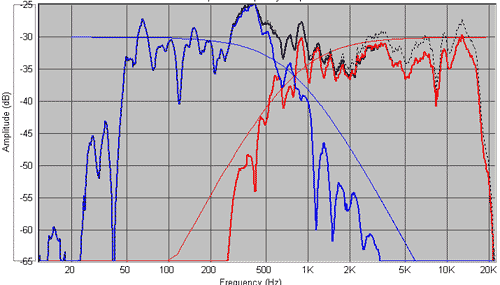
The acoustic phase response shows the Linkwitz-Riley characteristic of the filter even better.
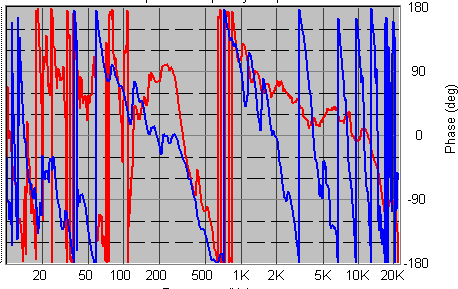
The impedance is tube-amplifier friendly, which is a necessity for a Triode Festival.
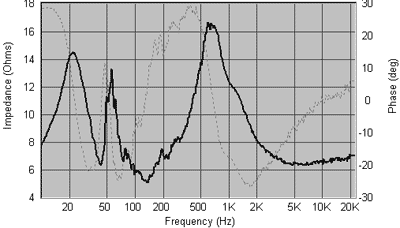
The measured response:
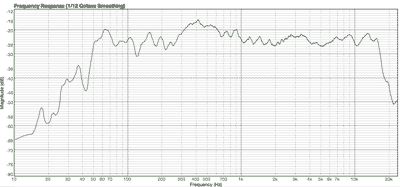
The high-end built of the prototype:
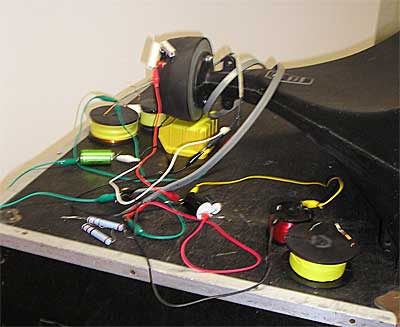
I must say I'm pleasantly surprised about the final result. Where in the beginning the whole sounded thin, the overall result is very live-like and homogeneous. It doesn't have the transparency and imaging capabilities of a high-end speaker, and treble is not "airy", but its timbre is very musical and enjoyable, and makes the music very involving. I could happily live with this type of sound at home (but not with the form factor!). All 'n' all this was a very funny project to do, with a surprising outcome. I'm curious about the reaction of the owner.
Better components
10/09/06 14:18 Filed in: Milestones
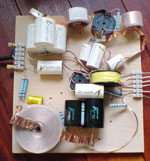
I've applied better components, some minor tweaks, and tried to describe the sonic properties. (read more...)
New filter, higher order
09/08/06 19:28 Filed in: Milestones

A new filter has been made with a higher order filter between the midrange and tweeter. This is getting very close to the end result I want! (read more...)
Jon's Filter
12/07/06 20:41 Filed in: Milestones

Finally! After months of time, me and Korneel had sufficient time to construct and listen to Jon Marh's filter. How does it sound? (read more...)
Room acoustics
17/06/06 14:49 Filed in: Milestones
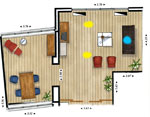
Last week, I moved around the speakers in the room, with some interesting observations (read more...).